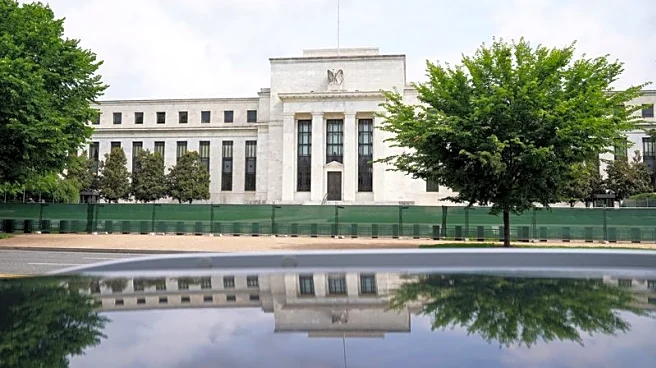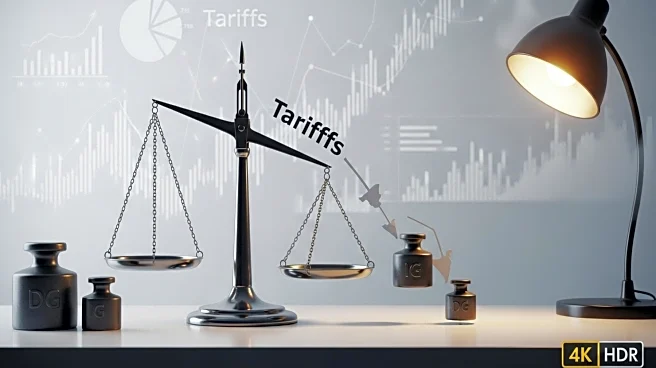What is the story about?
What's Happening?
The U.S. inflation rate increased to 2.9% in August, marking the fastest rise since the beginning of the year. This development comes ahead of a crucial Federal Reserve meeting where policymakers will decide whether to adjust interest rates. The rise in consumer prices, reported by the U.S. Labor Department, is attributed to increased costs in cars, household furnishings, and grocery staples such as tomatoes and beef. The central bank has maintained interest rates since last year, closely monitoring the impact of President Trump's import tariffs on consumer prices. Despite criticism from President Trump and his allies for not cutting rates as aggressively as other central banks, the Federal Reserve is expected to reduce interest rates by a quarter of a percentage point next week.
Why It's Important?
The inflation surge is significant as it influences the Federal Reserve's monetary policy decisions, impacting borrowing costs and economic growth. Higher inflation can erode consumer purchasing power, affecting household budgets and spending. The tariffs imposed by President Trump are contributing to price increases, particularly in tariff-sensitive goods like clothing and household items. This situation poses challenges for businesses that may pass on increased costs to consumers. Additionally, the labor market shows signs of weakness, with fewer jobs added in August than anticipated and a slight rise in the unemployment rate. These factors combined could lead to further interest rate cuts to stimulate economic activity.
What's Next?
The Federal Reserve's upcoming decision on interest rates will be closely watched, as it could set the tone for future monetary policy actions. Economists predict a rate cut next week, with potential for additional reductions in the coming months. The central bank will continue to assess inflation trends and labor market conditions to determine the best course of action. Businesses and consumers may need to adapt to changing economic conditions, including potential price adjustments and shifts in spending patterns.
Beyond the Headlines
The inflationary pressures highlight the broader implications of trade policies and immigration measures on the U.S. economy. Tariffs and restrictive immigration policies are contributing to price increases and labor market challenges. These developments raise questions about the long-term sustainability of such policies and their impact on economic growth and consumer welfare. The Federal Reserve's response to these challenges will be crucial in shaping the economic landscape.
AI Generated Content
Do you find this article useful?
















